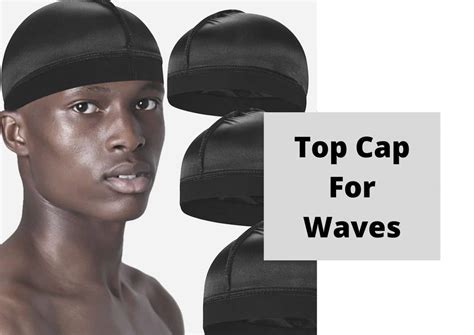What is a Cap for Waves and How Does it Work?
A cap for waves is a device designed to reduce the amplitude and energy of waves on the surface of a body of water. It typically consists of a flexible, perforated material that is placed over the surface of the water. The openings in the material allow some water to pass through while trapping larger waves, effectively dissipating their energy.

Benefits of Using a Cap for Waves
Using a cap for waves offers numerous benefits, including:
- Reduced wave height and energy: The cap effectively absorbs wave energy, significantly reducing wave height and impact force.
- Protection of shoreline and structures: By mitigating wave action, the cap helps protect coastal areas, beaches, and structures from damage caused by erosion and flooding.
- Enhanced water quality: The reduced wave action can improve water quality by preventing sediment resuspension and promoting clearer water.
- Improved navigation and safety: The calmer waters created by the cap enhance navigation and reduce the risk of accidents for boats and swimmers.
- Aesthetic improvement: A cap for waves can enhance the visual appeal of a body of water by creating a more serene and tranquil environment.
Applications of Cap for Waves
Caps for waves have a wide range of applications, including:
- Coastal protection: Reinforcing vulnerable coastlines and beaches against erosion and storm surges.
- Harbor protection: Creating calm waters for safe mooring and navigation within harbors and marinas.
- Waterfront development: Enhancing water quality and aesthetic appeal for waterfront properties and recreational areas.
- Oil spill containment: Reducing the spread of oil spills by mitigating wave action.
- Wave energy conversion: Capturing the energy of waves for electricity generation.
Statistics and Trends
- According to the National Oceanic and Atmospheric Administration (NOAA), wave-related damage in the United States costs an estimated \$1 billion annually.
- The Global Wave Energy Council estimates that the wave energy market will grow to \$15 billion by 2030.
- A study by the University of California, Berkeley, found that caps for waves can reduce wave height by up to 60%.
Innovative Applications
The concept of a cap for waves can be adapted to create new applications, such as:
- Wave-powered desalination: Combining wave energy capture with desalination technology to generate renewable water sources.
- Wave-absorbing floating platforms: Creating platforms for offshore wind farms or other marine infrastructure that can withstand high wave conditions.
- Wave-responsive architecture: Designing buildings and structures that adapt to changing wave patterns, minimizing damage and enhancing sustainability.
Tables
Table 1: Types of Caps for Waves
| Type | Material | Perforation Rate |
|---|---|---|
| Floating cap | Polyethylene | 20-40% |
| Submerged cap | PVC or rubber | 10-25% |
| Suspended cap | Nylon or polyester | 30-50% |
Table 2: Benefits of Different Cap Materials
| Material | Advantages | Disadvantages |
|---|---|---|
| Polyethylene | Lightweight, durable, UV resistant | Can be prone to puncture |
| PVC | Flexible, impermeable, low cost | Can degrade over time in sunlight |
| Rubber | Highly durable, elastic, non-toxic | Heavier than other materials |
| Nylon | Strong, lightweight, rot-resistant | Can be sensitive to high temperatures |
| Polyester | High tensile strength, water-resistant, affordable | Prone to UV degradation |
Table 3: Applications of Cap for Waves
| Application | Benefits | Key Considerations |
|---|---|---|
| Coastal protection | Erosion control, storm surge mitigation | Wave height, shoreline curvature |
| Harbor protection | Mooring and navigation enhancement | Water depth, tidal range |
| Waterfront development | Water quality improvement, aesthetic appeal | Water flow, environmental impact |
| Oil spill containment | Spread reduction, cleanup efficiency | Spill size, wave conditions |
Table 4: Common Mistakes to Avoid
| Mistake | Consequences | Solution |
|---|---|---|
| Overestimating wave height | Inadequate wave dissipation | Accurate wave data analysis |
| Underestimating perforation rate | Reduced wave absorption | Optimal perforation design |
| Improper installation | Reduced effectiveness | Professional installation |
| Poor maintenance | Shortened lifespan | Regular cleaning and inspection |
Effective Strategies
- Design for specific wave conditions: Analyze historical wave data to determine the optimal cap size, shape, and perforation rate.
- Choose the right material: Select a material that meets the durability, flexibility, and environmental requirements of the application.
- Properly install and maintain: Ensure the cap is securely anchored and regularly cleaned to maintain its effectiveness and longevity.
- Integrate with other coastal protection measures: Consider using the cap in conjunction with breakwaters, seawalls, or beach nourishment for enhanced protection.
- Monitor performance: Track the wave height reduction and overall performance of the cap to make adjustments as needed.
Tips and Tricks
- Use a gradual perforation gradient to maximize wave absorption while minimizing water flow resistance.
- Consider adding ballast to floating caps for stability in high wave conditions.
- Experiment with different cap shapes and sizes to optimize wave attenuation for specific applications.
- Explore the use of biodegradable materials for environmentally friendly cap solutions.
- Collaborate with researchers and industry experts to stay updated on the latest advancements in cap for waves technology.
Conclusion
Cap for waves is an innovative and effective solution for wave suppression with numerous applications in coastal protection, harbor management, and water quality improvement. By carefully selecting the design, material, and installation method, caps for waves can significantly mitigate the impact of waves, protect infrastructure, and enhance the overall enjoyment of water bodies. As research and innovation continue, the future of cap for waves holds promising possibilities for addressing coastal challenges and creating sustainable solutions for a more resilient and enjoyable water environment.
